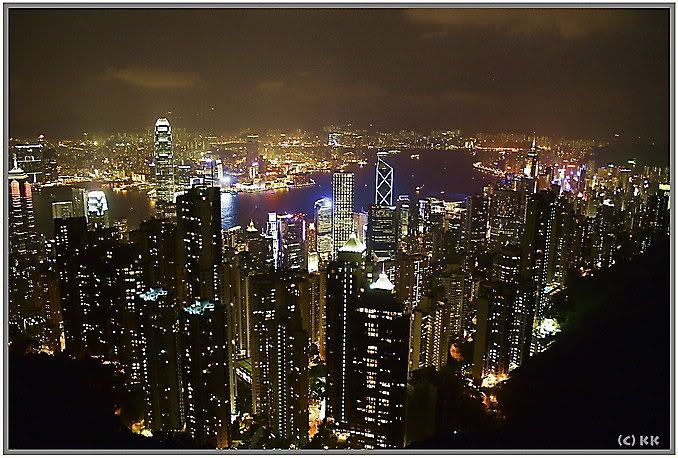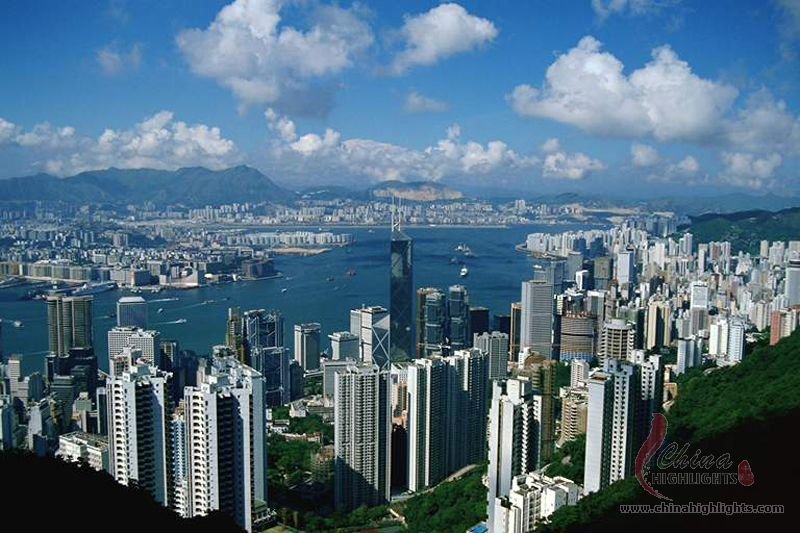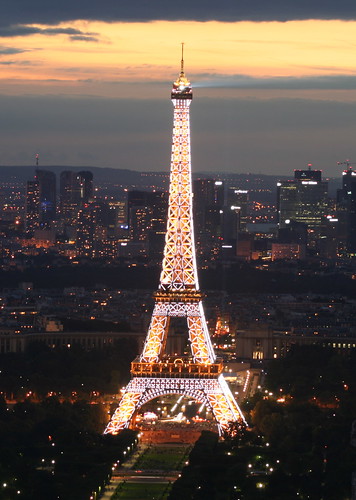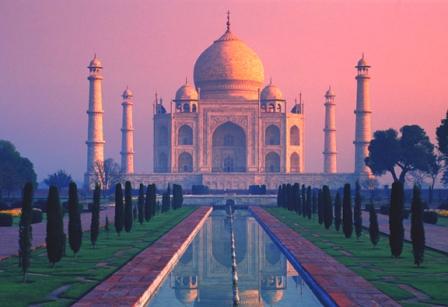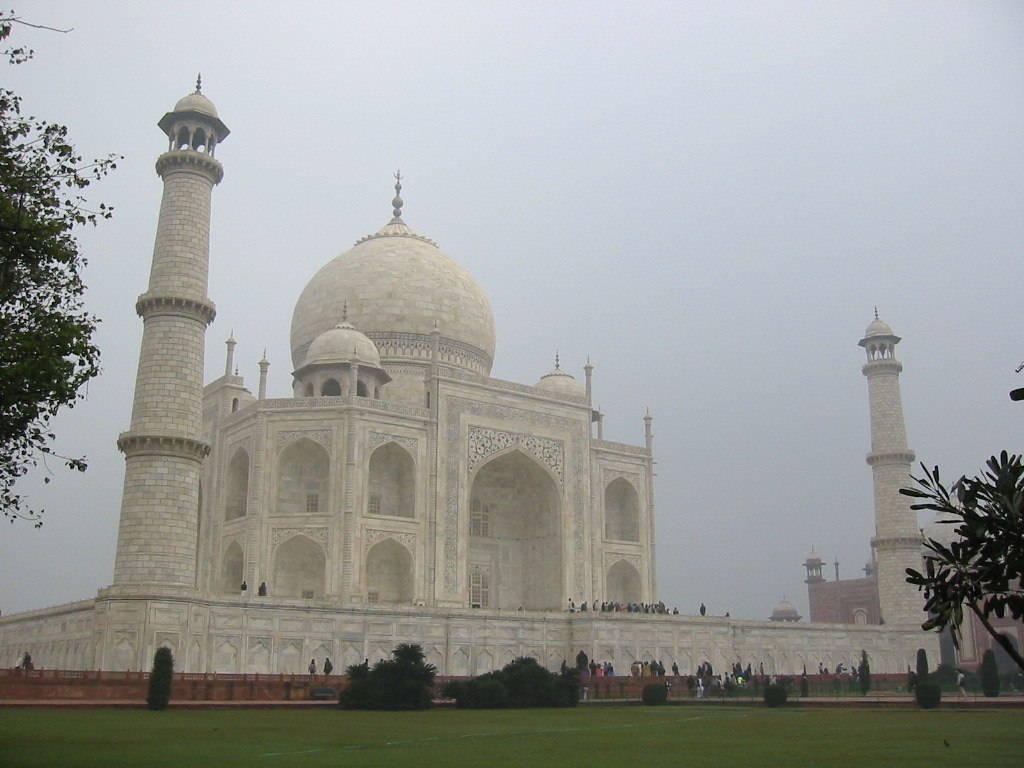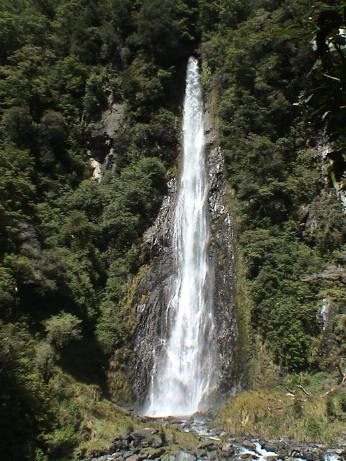
Sunday, January 31, 2010
Malaysia Beaches,Langkawi the Most Romantic destination
Langkawi’s islands and the adjacent beaches are a few of the most dazzling places in Southeast Asia in Malaysia. This is one of the finest places you can opt for picnic with your love. White sand gleaming in the glow of the stifling sun, pleased by the light wind as gulls and eagles wave in the skies, for sand and surf, which Langkawi has to offer.

This small island never wonder be celebrated the most excellent beaches among outing crazies. The beautiful sweeping seashore, sandy bays, warm water and its vegetation all leads to in a dreamy day.

Wednesday, January 27, 2010
Jog Falls : The Famous Fall in India
Monday, January 25, 2010
Sunday, January 24, 2010
China to invest 1 billion Euros for tourism centre in Murcia, Spain

The Chinese government and a variety of businesses from different sectors will be investing around 1 billion Euros for the development of a tourism, logistics and leisure centre in Murcia, Spain next year. The project is known as Special Zone of Chinese Investments and will include 2000 apartments, shopping and entertainment complexes, and educational facilities in addition to a theme park showcasing the Chinese cultural heritage.
The construction work on the project is expected to begin next year in the city of Lorca and likely to be completed in 2013 or 2014. The project has been made possible by negotiating with Chinese and Asian private initiatives for two years.
The logistics centre will showcase Chinese monuments and have eight themes including one on Chinese culture and history. Around 187,000 square meters of area would be given to Chinese business companies which will invest in ZEIC.
A commercial area where Chinese products and services will be provided is also part of the plan. The centre will also have a business training school and the leisure zone would have a casino, food services, entertainment services, a five star hotel and a golf course.
The ZEIC has been described as a ‘bridge between Spain and China’ by the Spanish government.
Abu Dhabi's Marina Development project forms a key component of tourism strategy

Abu Dhabi is determined to grow its marine and yachting industries as a key component of a wider tourism strategy, says His Excellency Sheikh Sultan Bin Tahnoon Al Nahyan, Chairman, Abu Dhabi Tourism Authority (ADTA), ahead of the 2nd Abu Dhabi Yacht Show (ADYS) set to take place in next month.
Marina Development forms key component of Abu Dhabi's tourism strategy. ADTA has thrown its full support behind ADYS as the headline sponsor of the Middle East's premier show focusing exclusively on the luxury superyacht and megayacht sector, in a bid to boost Abu Dhabi's aspirations to become the epicentre of the Middle East's yachting and marine leisure business.
Abu Dhabi's 2030 strategic plan includes a massive marina component, including approximately 45 marinas of various sizes, and it is believed that in the future there could be as many as 10,000 recreational craft in the emirate. Currently there are about 1,600 berths available in six existing marinas in Abu Dhabi. From the world's largest luxury motor yachts to family day boats, from tall ships to tenders, racing yachts to fishing boats, superyachts to ski boats, Abu Dhabi plans to deliver a range of unique marinas catering to the entire spectrum of needs of the boating community wishing to enjoy the UAE capital's warm waters.
"Marine leisure is expected to play an increasingly important role in advancing Abu Dhabi's tourism growth. This is a very natural lifestyle for us as Abu Dhabi is blessed with over 400 kilometres of coastline, over 200 islands and a rich marine life. Progression into the marine leisure segment will, however, be measured, in line with our preferred style. We will leverage these assets while at the same time conserving them, for the benefit of this generation and for those to come,"
says Al Nahyan.
Marina expert Captain Stephen Hunt, who serves as an Advisor for Water Transport in Abu Dhabi's Department of Transport, also believes the UAE capital is well placed to adopt a leading role in the regional yachting industry.
"It is made up of about 200 islands interspersed with numerous waterways and the country has something of a maritime history, having a heritage of pearling and fishing," says Hunt.
Some of the biggest projects in Abu Dhabi have marina components. A huge development in the pipeline aims to turn Mina Zayed, currently Abu Dhabi's main port, into a superyacht marina to be known as Marina Zayed, which will be home to a large number of megayachts. Close to this development will be another marina for recreational boating which will be linked to other projects such as the Corniche and Saadiyat Island developments by canals that will be cut through the existing port.
The world-class marina facilities of the iconic Yas Island development were recently unveiled during the F1 Etihad Airways Abu Dhabi Grand Prix and generated impressive international interest. The island project - developed by one of the emirate's largest developers, Aldar Properties - has brought to the emirate stunning marina facilities that were magnificently showcased at last November's racing extravaganza. Yas Marina is again expected to bring more yachting enthusiasts together and further contribute to developing Abu Dhabi's expanding leisure marine industry when it hosts the ADYS 2010.
Informa Yacht Group (IYG), the ADYS organiser, stresses the inaugural show held in March 2009 opened to an enthusiastic reception, and went on to impress exhibitors, industry experts, press and visitors alike over the course of its three-days.
"By general consensus, we provided brand new, first-class business opportunities in a vastly wealthy and largely unexploited market. Some exceptional sales were made, at a time when business in the rest of the world was largely depressed, and that gave a massive uplift to the region's industry," said Franck Dailles, Group Director of IYG.
The UAE leads the Middle East yacht and boat industry with an annual demand of about 1,500 units. Meanwhile, GCC countries top the list in the buying and renting of yachts, which makes the region a target for major European and American companies, many of which will make their presence felt at the 2nd ADYS.
Saturday, January 23, 2010
Thailand Places to Visit,Places to See in Thailand,Tourist places
Ko Phi Phi
Ko Phi Phi is made up of two islands, Phi Phi Don with its endless beaches and Phi Phi Le, a private enclosed area girdled by sheer cliffs.Previously (and still is) a temporary residence for sea gypsies, Ko Phi Phi has since turned into a favorite spot for diving lovers from all over the world. The coral reefs in the clear waters ensure a spectacular sighting and the colorful fishes swimming in their natural habitat is a sight to behold.


Krabi Tour and Sightseeing,Places to see in Krabi
Krabi is a paradise for nature lovers and visitors who want to enjoy the beauty and diversity of a seaside holiday in a laid–back, casual atmosphere. You’ll find fantastic beaches backed by towering limestone peaks, lovely tropical islands scattered off the coast and colourful coral reefs for diving adventures. Located 800kms south of Bangkok, Krabi is one of Thailand’s most popular destinations.
Most of the attractions in the Krabi area are natural ones, and in fact you’ll find some of the most dramatic seascapes in the world here. We’ve listed some of the most popular attractions here, and suggest that you consult one of the free tourist maps for exact locations.
Tourist Attractions of Krabi:
Ao Nang beach
This is Krabi’s main resort area, comprising a long stretch of beach, half of which has a backdrop of striking karst cliffs and the other half lined with resorts and tourist amenities along the beachfront road. Ao Nang is quite pleasant and a relaxed spot to enjoy your holiday. It’s not overcrowded like Patong in Phuket, and has a far more natural feel, but you’ll have to wander along the beach to avoid the noisy longtail boats that come and go from this point. Sunsets here are particularly good, with offshore islands as a fitting

Krabi Town
The small provincial capital that provides a glimpse into real Thai life. The town has largely escaped commercial tourism due to its lack of a beach, but it’s an interesting place to visit, having colourful markets, a pleasant walking path that follows the estuary mouth and lots of restaurants offering up local favourites, with seafood being a speciality
Railay Beach
Considered one of the most spectacular of all the Andaman coastal locations. This idyllic spot is a peninsula that canonly be reached by boat, as it’s separated from the mainland by sheer limestone cliffs. A few quiet resorts are situated between the two crescent–shaped beaches. In all, there are a number of beautiful beaches to choose from, but Phra Nang attracts most of the day–trippers as it features an ancient shrine inside a cave. Those who are fit can hike up a steep path to the top of the karst and gaze down into a hidden sinkhole lake in the middle
Koh Lanta Marine National Park
Home to Chai Leh, who are known in English as sea gypsies. They typically live in small settlements and are nomadic, earning a living from collecting shells and fishing. The Chai Leh have their own language and set of spiritual beliefs, which are animistic in nature.
At the northern and southern extremes of Koh Lanta, the mountains are covered by virgin rainforest. On the west coast, there are numerous beaches that are wonderfully situated and also heavily developed but in a natural way, such as Khlong Dao, Khlong Khong, Khlong Nin and Phra Ae, providing views of spectacular seascapes. Along the western side and at the northern tip near Laem Kho Kwang, you’ll find coral reefs. Also at the northern tip’s Saladan pier, there are banks, shops, eateries and tour operators
Krabi Tourism, hotels resorts, hotel room, Travel guide to Krabi
Krabi, a coastal province, abounds with countless natural attractions that never fail to impress tourists. Such attractions include white sandy beaches, crystal clear water, fascinating coral reefs, caves and waterfalls, as well as numerous islands.


The distinguishing feature of both Krabi and neighboring Phang Nga is the massive limestone karsts, rising vertiginously out of the flat rice paddies on land and as islands from the sea.
Add in some gorgeous beaches and excellent scuba diving and rock climbing, and it's little wonder that tourism in the area has been booming.


While less commercialized than neighboring Phuket, Krabi Province cannot be described as undiscovered: it receives two million visitors a year, and the major tourist areas cater extensively for foreigners.
Krabi Weather:
Krabi follows a similar climate to Phuket with average temperatures around 75ºF to 89ºF (24ºC to 32ºC) year round.
Cool
The best time to visit Krabi is November to March when humidity and temperatures average 28C and cool breezes keep things comfortable.
Hot
The hottest time is April - May, with temperatures ranging from 80ºF to 95ºF (27ºC up to 36ºC). There are frequent short heavy thundery showers, offering welcome relief from the temperature and humidity.
The Thai New Year (Songkran) occurs on April 13th and everyone sprinkles (or throws) cool water on each other (see picture).
Locals enjoy June, July and August, since the weather is usually fine and favourite haunts remain uncrowded. The usual pattern is brief but heavy showers, with plenty of sunshine between downpours. Everything is a little less expensive at this time of year, as well. Temperatures range between 70ºF and 90ºF (20ºC to 33ºC).
Wet
During September and early October we start to remember our umbrellas. This makes an ideal time to visit abroad. One consolation for those who remain is that the beaches, outdoor restaurants and streets are relatively uncluttered by visitors. And even at this time, we still get long intervals of sunshine between the heavy showers. Anyway, plenty of low season activities, both water- and land-based, still offer themselves in Krabi during this wettest part of the summer season.
Thursday, January 21, 2010
Hongkong Accomodation Best Palace Victoria Peak
Victoria Peak: High above Hong Kong Island on the 'back of the Dragon', Victoria Peak is Hong Kong's premier visitor attraction, providing magnificent harbour and city views. Arriving late afternoon enables you to experience the dazzling panorama of Hong Kong Island, the harbour, Kowloon and the hills beyond. Later, you can thrill to the neon-dotted skyline by night. What's more, The Peak offers visitors a multitude of fantastic entertainment, dining and shopping options.
Wednesday, January 20, 2010
Popular Places to Visit in Paris
Who doesn’t know Paris? A city that is almost always associated to romance, love and adventure.
What to see in Paris? Wow, lots of things. The most famous sites are: The Eiffel Tower, The Museum of Louvre, The Museum of Orsay, The Montparnasse Tower, The Notre Dame of Paris, The Sacré Coeur Basilica, Avenue of Champs Elysées, Garden of Luxembourg, Garden of Tuileries, The Versailles Palace and garden, La Defense, Center of Georges Pompidou,… and lots of other big sites
But choose your own places, according to what you like and to what interests you. Let me give you additional tips for your visit in Paris:
* To save some budget, avoid using taxi. Use the Metro and RER service (the subway of Paris), or the bus. But due to the traffic, I’d rather take the Metro. You can find Metro stations everywhere, but always watch your bags, watches, or cell phones!
* You can ask for free the map of Metro and bus lines everywhere! But preferably ask for it when you arrive in Paris in the airport… You can also ask for it in the Metro stations, some big department stores (for example Galeries Lafayette), etc…
* Learn a little French before coming… Just some little useful expressions to say: how do you do, how much does it cost, I would like some water, etc… It will be very useful!
* I know that Paris sounds glamorous… But just bring your comfortable clothes (according to the season), comfortable shoes (girls, our high heels are not made for the streets in Paris), one or two formal clothes if you want to watch opera or ballet, and you’re ready!
* What to eat??? Hah, welcome to France my friend. Try and dare your self to eat French food. If you’re afraid to wrong-order, ask the waiter first what it is. One suggestion, if you go to restaurants, ask for ménu, which doesn’t means the menu card, but a meal consisted of entry, main menu, and a dessert. Usually it’s cheaper to buy ménu than to eat à la carte, which means to choose one by one the entry, the main menu, and the dessert from the menu card/book. If you want to save some budget, try French famous sandwiches, or pizza, or Kebab (sandwich from Turki), or panini (sandwich from Italia), or the famous French crêpes!
Tuesday, January 19, 2010
Taj Mahal Building in India
The Taj Mahal base structure is a large, multi-chambered structure. The base is essentially a cube with chamfered edges and is roughly 55 meters on each side (see floor plan, right). On the long sides, a massive pishtaq, or vaulted archway, frames the iwan with a similar arch-shaped balcony. On either side of the main arch, additional pishtaqs are stacked above and below. This motif of stacked pishtaqs is replicated on chamfered corner areas as well. The design is completely symmetrical on all sides of the building. Four minarets, one at each corner of the plinth, facing the chamfered corners, frame the tomb. The main chamber houses the false sarcophagi of Mumtaz Mahal and Shah Jahan; their actual graves are at a lower level.
The marble dome that surmounts the tomb is its most spectacular feature. Its height is about the same size as the base of the building, about 35 meters, and is accentuated as it sits on a cylindrical "drum" of about 7 metres high. Because of its shape, the dome is often called an onion dome (also called an amrud or guava dome). The top is decorated with a lotus design, which serves to accentuate its height as well. The shape of the dome is emphasised by four smaller domed chattris (kiosks) placed at its corners. The chattri domes replicate the onion shape of the main dome. Their columned bases open through the roof of the tomb and provide light to the interior. Tall decorative spires (guldastas) extend from edges of base walls, and provide visual emphasis to the height of the dome. The lotus motif is repeated on both the chattris and guldastas. The dome and chattris are topped by a gilded finial, which mixes traditional Persian and Hindu decorative elements. The main dome is crowned by a gilded spire or finial. The finial, made of gold until the early 1800s, is now made of bronze. The finial provides a clear example of integration of traditional Persian and Hindu decorative elements. The finial is topped by a moon, a typical Islamic motif, whose horns point heavenward. Because of its placement on the main spire, the horns of moon and finial point combine to create a trident shape, reminiscent of traditional Hindu symbols of Shiva.
The exterior decorations of the Taj Mahal are among the finest to be found in Mughal architecture. As the surface area changes, a large pishtaq has more area than a smaller one, and the decorations are refined proportionally. The decorative elements were created by applying paint or stucco, or by stone inlays or carvings. In line with the Islamic prohibition against the use of anthropomorphic forms, the decorative elements can be grouped into either calligraphy, abstract forms or vegetative motifs.
The interior chamber of the Taj Mahal steps far beyond traditional decorative elements. Here the inlay work is not pietra dura, but lapidary of precious and semiprecious gemstones. The inner chamber is an octagon with the design allowing for entry from each face, though only the south garden-facing door is used. The interior walls are about 25 metres high and topped by a "false" interior dome decorated with a sun motif. Eight pishtaq arches define the space at ground level. As with the exterior, each lower pishtaq is crowned by a second pishtaq about midway up the wall. The four central upper arches form balconies or viewing areas and each balcony's exterior window has an intricate screen or jali cut from marble. In addition to the light from the balcony screens, light enters through roof openings covered by chattris at the corners. Each chamber wall has been highly decorated with dado bas relief, intricate lapidary inlay and refined calligraphy panels, reflecting in miniature detail the design elements seen throughout the exterior of the complex. The octagonal marble screen or jali which borders the cenotaphs is made from eight marble panels. Each panel has been carved through with intricate pierce work. The remaining surfaces have been inlaid with semiprecious stones in extremely delicate detail, forming twining vines, fruits and flowers.
Monday, January 18, 2010
Disneyland Park at Paris
Disneyland Paris Park is a theme park which is a part of Disneyland Resort Paris. Operated by Euro Disney S.C.A., it is one of two theme parks in the complex just outside of Paris, in Marne-la-Vallée, France.
The park is based on a concept pioneered by Disneyland in California and further employed at the Magic Kingdom in Florida and Tokyo Disneyland in Japan. Occupying 566,560 m² (140 acres), it is the largest Disney park based on the original in California. The park opened as Euro Disneyland on 12 April 1992.
The park, as well as its surrounding complex, initially failed to meet financial expectations. This resulted in an image change in which the word "Euro" was phased out of several names, including Euro Disneyland.
Sunday, January 17, 2010
Enjoy The Colonial Creek Falls
Subscribe to:
Comments (Atom)















